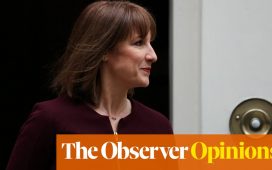PICKING between a fixed-rate or tracker mortgage can be a big dilemma for first-time buyers.
It comes as hopes that the Bank of England will soon lower rates begins to fade.
Decision-makers on the Bank’s Monetary Policy Committee (MPC) voted to keep interest rates at 5.25% for a fifth consecutive time last month.
Banks and lenders use the Bank of England (BoE) base rate to set the interest rates it offers customers on mortgages, loans and savings.
At the beginning of the year, economists reckoned falling inflation inflation would mean the Bank would start cutting rate in May or June.
But now, they are predicting the Bank will only start lowering rates from the current 5.25 per cent in August or September.
Mortgage rates also have started to creep back up as a result.
This can leave first-time buyers with a difficult decision to make when it comes to deciding which kind of mortgage to go for.
A fix gives you the security of regular monthly payments, but it means that you’re locked in for a set period – usually two or five years.
Tracker mortgages on the other hand are linked to the base rate, so the rate could rise or fall in line with interest rates.
We spoke to mortgage experts to help you make a decision.
Should I fix my mortgage?
Charlotte Nixon, a mortgage expert at Quilter, said a fix can be a good option for a first-time buyer who will need to learn how to balance their mortgage repayment with other bills.
She said: “First time buyers often prefer to understand exactly how much they will need to pay for their mortgage each month to ensure it is affordable and they can manage their finances accordingly.
“If is the case then opting for a fixed rate may be the better option.”
Plus, first-time buyers may benefit from protecting themselves again the uncertainty of the ups and downs of interest rates.
Reece Beddall, sales and marketing director at Bluestone Mortgages said: “While trackers are proving an increasingly popular option, there is an element of risk involved,” she said.
“Should the Bank of England base rate rise, opting for fixed rate provides financial peace of mind.”
“It’s important to remember though, that there’s no guarantee as to where rates will head.”
Plus, David Hollingworth, associate director at L&C Mortgages, said that fixed rates are currently lower than tracker rates.
The average two-year fixed residential mortgage rate today is 5.81%, while the average five-year fix is 5.38%, according to Moneyfacts.
The average two-year tracker rate currently stands at 6.14%.
“Trackers could of course fall but there’s still a question mark over when they may start to fall and how quickly they could drop,” David added.
How to avoid new-build problems and what to do about them
HERE’S how new-build buyers can avoid problems, and what they can do if they come across them.
Before you buy
New-build buyers should consider taking out a survey by an independent professional to check for any snags before buying.
According to consumer body the HomeOwner’s Alliance, a snagging survey should spot minor issues such as a door that’s misaligned and catching on the carpet as well as more serious structural issues.
These reports typically cost between £300 and £600. Get quotes from local firms but ensure valuers are members of professional body RICS.
New-build buyers are advised that solicitors should also check properties are fully signed off before completing the sale.
If they are not, then you should usually agree to some kind of retention with the builder.
This means holding back a certain amount of the purchase price until the building work is complete.
Once you’re in your new home
Most builders have a two-year warranty, so ask the building company to fix any issues within this window.
After the two years, you may find some building policies still cover major issues so check with the building company. If not, you may have to rely on your home insurance.
Where you’re struggling to get your housebuilder to fix issues you could consider using a relevant alternative dispute resolution (ADR) scheme or taking the firm to court. See the HomeOwner’s Alliance for more information on this.
Why should I consider a tracker?
Unlike fixed-rate mortgages, your monthly payments with a tracker can go up or down depending on the wider economy.
If interest rates fall, a tracker means you’ll make lower payments to your lender.
Or if interest rates increase, your monthly payments will increase.
Charlotte from Quilter said: “A tracker mortgage may appeal given the Bank of England is unlikely to declare a rate cut just yet.
“It could provide extra flexibility and the potential to pay less over the term of the deal as the monthly payments could fall as and when the Bank does begin to lower rates.
David added that it is up to a buyer to decide whether certainty is more important to them than a potentially saving.
He said: “There’s still a chance that a tracker could end up with a lower rate if interest rates do fall but no one truly knows what could happen.
“It makes sense to identify what is most important to you and will help you best to manage your new mortgage.”
Tips for getting the best mortgage deal
Getting the best rate on your mortgage can depend on the rates available at the time, but there are several ways to land the best deal.
Usually the larger the deposit you have the lower the rate you can get.
If you’re remortgaging and your loan-to-value ratio has changed this could also give you access to better rates than before.
A change to your credit score or a better salary could also help you access better rates.
If you have a fixed rate, you could see higher rates when you come to the end of the current term after the BoE rise rises.
And if you’re nearing the end of a fixed deal soon it’s worth looking for new deals now.
You can lock in current deals sometimes up to six months before your current deal ends.
Leaving a fixed deal early will usually come with an early exit fee, so you want to avoid this extra cost.
But depending on the cost and how much you could save by switching versus sticking, it could be worth paying to leave the deal – but compare the costs first.
To find the best deal use a mortgage comparison tool to see what’s available.
You can also go to a mortgage broker who can compare for you, but you may have to pay for this service.
It could cost a couple of hundred pounds but it might save you thousands on your mortgage overall.
You’ll also need to factor in fees for the mortgage, though some have no fees at all, or you can add it to the cost of the mortgage, but beware that means you’ll pay interest on it and so will cost more in the long term.
You can use a mortgage calculator to see how much you could borrow.
Remember, that you’ll have to pass the lender’s strict eligibility criteria too, which will include affordability checks, and looking at your credit file.
You may also need to provide documents such as utility bills, proof of benefits, your last three month’s payslips, passports and bank statements.
Do you have a money problem that needs sorting? Get in touch by emailing squeezeteam@thesun.co.uk.
Plus, you can join our Sun Money Chats and Tips Facebook group to share your tips and stories











